The Ultimate List of Best-Selling Hospitality, Tourism & Travel Books for 2023
1. The Spirit of Hospitality: How to Add the Missing Ingredients Your Business Needs
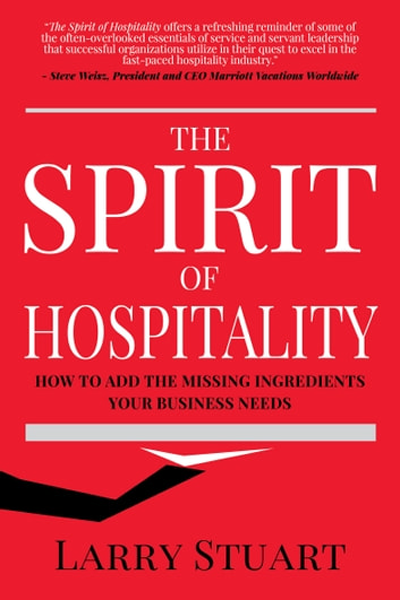
The Spirit of Hospitality takes readers on a journey of passion for purpose that empowers the missing ingredients of hospitality into a proven leadership style that works. Time has sped up to the point where technology has surpassed the last few thousand years by only a generation. What happened to kindness, humility and the human touch vs. having our face buried into a laptop or IPhone?
A life dedicated to excellence does not come by chance, or with age, but by choice and commitment. Larry Stuart strives to give The Spirit of Hospitality to others who are called to a life of prosperity and significance. He provides the tools, attributes and real-life examples of what works when it comes to serving up a memorable guest service delivery and describes the necessary ingredients of hospitality.
The book “The Spirit of Hospitality: How to Add the Missing Ingredients Your Business Needs” by Larry Stuart offers several key takeaways
1.Passion for Purpose: The book takes readers on a journey of passion for purpose that empowers the missing ingredients of hospitality into a proven leadership style.
2.Impact of Technology: It discusses how technology has sped up time, surpassing the last few thousand years by only a generation.
3.Human Touch: The book questions what happened to kindness, humility, and the human touch in the age of technology
4.Excellence through Choice and Commitment: A life dedicated to excellence does not come by chance, or with age, but by choice and commitment.
5.Tools and Attributes for Memorable Service: The author provides the tools, attributes, and real-life examples of what works when it comes to serving up a memorable guest service delivery.
6.Necessary Ingredients of Hospitality: The book describes the necessary ingredients of hospitality.
7.Hope through Kindness, Humility, Integrity, Encouragement, Generosity, Teamwork, and Accountability: There is hope only if individuals bring back these missing ingredients.
8.Empowerment of Hospitality Spirit: Only then is the spirit of hospitality empowered to provide the right leadership approach in building relationships to a new level of expectation.
9.Achievement through Embracing Hospitality Spirit: It allows those who embrace that spirit to accomplish whatever they strive to achieve.
10.Running a Business with a Spirit of Hospitality: The book teaches what it means to run a business with a spirit of hospitality.
2. Walking the Amazon: 860 Days. One Step at a Time.

“Walking the Amazon” is a book by British explorer Ed Stafford, detailing his extraordinary journey along the entire length of the Amazon River. The expedition was conceived and successfully completed by Stafford, marking the first time anyone had journeyed the entire length of the Amazon River from source to sea on foot.
The journey began on April 2, 2008, when Ed Stafford and Luke Collyer set out from Camana, Peru on the Pacific Coast in search of the furthest source of the Amazon, which is acknowledged to be on the north face of Nevado Mismi. From there, they followed the course of the river with the intent of reaching the Atlantic Ocean within one year. However, Collyer departed from the expedition after three months due to growing differences between the two men.
Stafford continued alone and recruited Gadiel “Cho” Sánchez Rivera in August 2008 in the Red Zone. The new pairing fared better and, although Sanchez Rivera only originally committed to walking for five days, he decided not to return home and the two men, Stafford and Sanchez Rivera, walked for a further two years before reaching the mouth of the Amazon River on August 9, 2010.
“Walking the Amazon” is acknowledged to be the longest jungle trek in history. Stafford’s accomplishment of walking the length of the Amazon river has been described by Sir Ranulph Fiennes as being "truly extraordinary in the top league of expeditions past and present". In 2011 Guinness World Records formally recognised Stafford’s achievement and he appears in the 2012 Guinness Book of Records
The book provides a riveting account of Stafford’s history-making journey through one of Earth’s most bio-diverse habitats. It details his encounters with dangerous animals, machete-wielding indigenous people, injuries, weather challenges, as well as his own fears and doubts. The book also highlights the devastating impact of deforestation that Stafford witnessed firsthand during his journey
3. The Professional Bartender's Handbook: A Recipe for Every Drink Known - Including Tricks and Games to Impress Your Guests
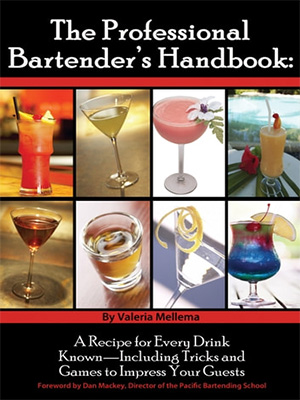
The Professional Bartenders Handbook is written for the professional bartender, but anyone can learn the simple tips and tricks this book provides. A copy belongs behind every bar, big or small. Whether running a stand-alone business or one incorporated into a restaurant, hotel, or food service operation, the successful bartender needs product and equipment knowledge and a strong grasp of mixology.
The Professional Bartender's Handbook is more than a recipe guide. If you have ever wondered what ingredients were in your favorite drink, this book will teach you. With nearly 1,500 different cocktails, shooters, and even a non-alcoholic section, there is a drink (or two) for everyone
The Professional Bartender's Handbook" by Valerie Mellema is a comprehensive guide for both professional bartenders and anyone interested in mixology. Here are some key takeaways from the book:
1. Extensive Recipe Guide: The book provides nearly 1,500 different recipes for cocktails, shooters, and even non-alcoholic drinks.
2. Alphabetical Order: The recipes are organized in alphabetical order, making it easy to find the drink you're looking for.
3. Detailed Instructions: Each recipe comes with suggested glassware, ingredients, and garnishes.
4. Bar Setup: The book guides you on how to set up a bar, including the necessary equipment and glassware.
5. Responsible Serving: It emphasizes responsible serving issues, ensuring that bartenders understand their ethical responsibilities.
6. Bar Terminology and Measurements: It helps you learn bar terminology and measurements.
7. Tips and Tricks: The book is filled with tips and tricks to help you become a better bartender.
8. Bar Games and Tricks: It includes a section on bar games and tricks to impress your guests.
9. Famous Toasts: The book shares famous toasts that can be used on special occasions.
This book is more than just a recipe guide; it's a complete resource for anyone interested in the art of bartending.
4. The Heart of Hospitality: Great Hotel and Restaurant Leaders Share Their Secrets

Success in today’s rapidly changing hospitality industry depends on understanding the desires of guests of all ages, from seniors and boomers to the newly dominant millennial generation of travelers. Help has arrived with a compulsively-readable new standard, The Heart of Hospitality: Great Hotel and Restaurant Leaders Share Their Secrets by Micah Solomon, with a foreword by The Ritz-Carlton Hotel Company’s president and COO Herve Humler.
The Heart of Hospitality is a hospitality management resource like no other, put together by leading customer service expert Micah Solomon. Filled with exclusive, first-hand stories and wisdom from the top professionals in the industry, The Heart of Hospitality is an essential hospitality industry resource.
The Heart of Hospitality: Great Hotel and Restaurant Leaders Share Their Secrets" by Micah Solomon offers several key takeaways:
1.Building an Unsinkable Company Culture: Four Seasons Chairman Isadore Sharp discusses how to build a company culture that can withstand any challenges.
2.Hiring, Onboarding, and Training: Union Square Hospitality Group CEO Danny Meyer shares his secrets of hiring, onboarding, training, and more.
3.Creating a Customer-Centric Experience in a Chef-Centric Restaurant: Tom Colicchio (Craft Restaurants, Top Chef) talks about how to create a customer-centric customer experience in a chef-centric restaurant.
4.Innovative, Future-Friendly Hospitality Approach: Virgin Hotels CEO Raul Leal explains how Virgin Hotels created its innovative, future-friendly hospitality approach.
5.Engaging Today's New Breed of Luxury Travelers: Ritz-Carlton President and COO Herve Humler discusses how to engage today's new breed of luxury travelers.
6.Creating Hospitality Connections: Double-five-star chef and hotelier Patrick O'Connell (The Inn at Little Washington) shares the secrets of creating hospitality connections.
7.Building Millennial-Friendly Restaurants and Hotel Spaces: Designer David Rockwell shares the secrets of building millennial-friendly restaurants and hotel spaces (W, Nobu, Andaz) that resonate with today's travelers.
8.Building a Narcissism-Free Hospitality Culture: Restaurateur Traci Des Jardins talks about building a "narcissism-free" hospitality culture.
9.Creating Great Guest Experiences: Legendary chef Eric Ripert shares his principles of creating great guest experiences, simultaneously within a single dining room.
10.Service Standards, Customer Focus Strategies, Company Visions, Employees’ Motivations and Inspiration: The book covers pretty much main points in hospitality and hospitality business.
These takeaways provide a comprehensive understanding of how hospitality can be integrated into business practices for better outcomes.
5. Atlas of Cursed Places: A Travel Guide to Dangerous and Frightful Destinations

This alluring read includes 40 locations that are rife with disaster, chaos, paranormal activity, and death. The locations gathered here include the dangerous Strait of Messina, home of the mythical sea monsters Scylla and Charybdis; the coal town of Jharia, where the ground burns constantly with fire; Kasanka National Park in Zambia, where 8 million migrating bats darken the skies; the Nevada Triangle in the Sierra Nevada mountains, where hundreds of aircraft have disappeared; and Aokigahara Forest near Mount Fuji in Japan, the world's second most popular suicide location following the Golden Gate Bridge.
Atlas Obscura says this lushly illustrated New York Times bestselling guide to dozens of dangerous, eerie, and infamous locations is the perfect gift for "those who believe the world is still full of mysteries to investigate."
Here are 10 key takeaways from the book:
1. Historical Significance: Many cursed places have a deep historical significance, often tied to tragic events or legends that have endured for generations
2. Cultural Beliefs: Curses often arise from cultural beliefs and superstitions. Understanding these beliefs can provide insights into the local culture.
3. Natural Dangers: Some cursed places are dangerous due to natural phenomena like volcanoes, earthquakes, or extreme weather conditions. These locations remind us of the power of nature.
4. Human Tragedies: Many cursed places are linked to human tragedies such as wars, massacres, or accidents, underscoring the darker aspects of history.
5. Envirponmental Impact: The book highlights the impact of human activities on the environment and how certain areas have become cursed due to pollution or ecological damage.
6. Urban Legends: Cursed places often give rise to urban legends and folklore that continue to captivate the imagination of locals and travelers alike.
7. Architectural Beauty: Despite their curses, some places are architecturally stunning and worth visiting for their historical and aesthetic value.
8. Resilience: In some cases, communities living in or near cursed places exhibit resilience and adaptability, continuing to thrive despite the challenges.
9. Cultural Heritage: Cursed places can serve as a reminder of the importance of preserving cultural heritage and acknowledging past atrocities.
10. Mysterious Allure: The book illustrates how the allure of cursed places draws in adventurers, thrill-seekers, and those fascinated by the macabre, highlighting the complex human fascination with the dark and mysterious.
"The Atlas of Cursed Places" offers a unique perspective on travel, reminding readers of the hidden histories and mysteries that exist in various corners of the world. It encourages us to explore not only the beautiful and safe destinations but also the places with haunting stories and eerie reputations.
6. Setting the Table: The Transforming Power of Hospitality in Business

"Setting the Table: The Transforming Power of Hospitality in Business" is a book written by Danny Meyer, a renowned restaurateur and entrepreneur. Published in 2006, the book offers insights into Meyer's experiences in the restaurant industry and how he applied principles of hospitality to build a successful business empire.
Here is a summary of the key themes and insights from the book:
1. The Power of Hospitality: Danny Meyer emphasizes the importance of hospitality as a powerful tool for success in the restaurant industry and beyond. He argues that providing excellent service and making customers feel welcome can differentiate a business and create lasting customer loyalty.
2. Enlightened Hospitality: Meyer introduces the concept of "Enlightened Hospitality," which goes beyond traditional customer service. It involves genuinely caring for both customers and employees and creating a positive and inclusive work culture.
3. Creating Memorable Experiences:: The book discusses the significance of creating memorable dining experiences for customers. Meyer shares stories and anecdotes from his own restaurants to illustrate how attention to detail and a focus on the customer can elevate a dining experience.
4. Hiring and Training: Meyer emphasizes the importance of hiring the right people and investing in their training and development. He believes that employees who are passionate and well-trained are essential for delivering exceptional service.
5. Community and Sustainability: The book touches on the importance of being involved in the local community and being environmentally conscious. Meyer discusses how these values can be integrated into a business and contribute to its success.
6. Adaptation and Innovation: Meyer acknowledges the ever-changing nature of the restaurant industry and the need for businesses to adapt and innovate. He shares how his own restaurants have evolved over time to meet changing customer preferences.
7. Success and Leadership:Throughout the book, Meyer offers insights into leadership, entrepreneurship, and the challenges of running a successful restaurant business. His principles of hospitality can be applied to various industries. .
In "Setting the Table," Danny Meyer combines personal anecdotes with practical business advice to illustrate how the principles of hospitality can transform not only restaurants but also other businesses. The book is not only a valuable resource for those in the hospitality industry but also for anyone interested in the broader concepts of customer service, leadership, and entrepreneurship.
7. How to Be a Tour Guide: The Essential Training Manual for Tour Managers and Tour Guides
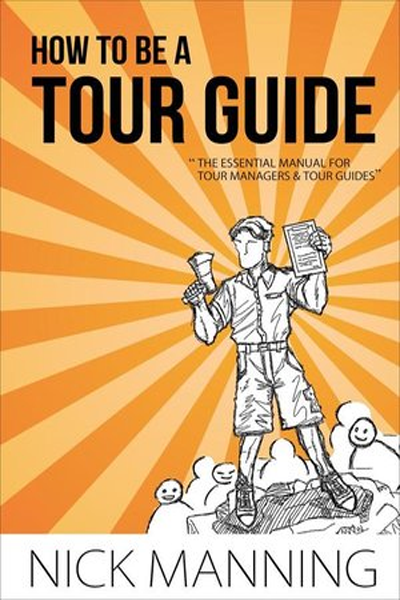
Whether you just want a job that lets you travel the world for free or you're looking for a career that lets you set your own hours and do what you love, this audiobook will detail how to become a tour guide with clear, practical advice and easy-to-follow steps.
It will teach you what you need to say, how to advertise your services, and how the pros make their money and ask for tips. It will teach you how to start your first tour, how to get repeat business after you've finished it, and even what life is really like "out there on the road".
Written by a tour guide with experience in guided tours across 15 countries and with contributions from experts all across the world, there's no better way to start one of the best careers in the world.
Here are 10 key takeaways from the book:
1. Planning and Designing Tours: The book teaches you how to plan, design, and price your first tour.
2. Marketing Strategies: It provides effective offline and online marketing strategies that work.
3. Research Skills: It guides you on how to conduct research for your tours.
4. Value Addition: The book emphasizes on 'value add' to make your tours more appealing.
5. Leading Large Groups: It provides tips on leading and controlling large groups.
6. Earning Potential: The book gives a realistic expectation of how much you can earn as a tour guide.
7. Industry Jargon: It helps you learn common industry jargon.
8. First Impressions: The book guides you on how to create a great first impression.
9. Handling Complaints: It teaches you how to deal with complaints and how to avoid them in the first place.
10. Life on the Road: The book gives you a glimpse of what life is really like 'out there on the road'.
This book is a comprehensive guide for anyone aspiring to become a tour guide or tour manager.
8. Unreasonable Hospitality: The Remarkable Power of Giving People More Than They Expect.

"Unreasonable Hospitality" by Will Guidara is a guide to elevating service-based businesses by exceeding customer expectations. It emphasizes the importance of people in business success, not just the product. The book introduces the concept of "unreasonable hospitality," which involves providing unique, tailor-made services that make customers feel like VIPs. It's about creating unforgettable experiences that linger in people's memories.
The book also discusses the importance of a positive internal team environment, where praise and criticism are delivered with intention, and everyone, even a busser, thinks like an owner.
Here are some key takeaways from the book "Unreasonable Hospitality: The Remarkable Power of Giving People More Than They Expect".
1. Hospitality is for everyone: Hospitality can be the secret spice that fuels other industries, not just restaurants.
2. Set lofty goals and bring your team along: Guidara believes in setting high goals and sharing them with the team to get their buy-in.
3. Focus on minute details: Even small details like the placement of plates matter as they set the tone for the service.
4. Work should not feel like work: Employees who enjoy their work can provide "unreasonable hospitality".
5. Go the extra mile: Don't be afraid to do something unexpected for your customers. It could be something as simple as offering them a free dessert or helping them with their bags.
6. Continuous improvement is key: Always be looking for ways to improve your products, services, and processes. By constantly innovating, you'll keep your customers coming back for more.
7. Celebrate collective achievements: Recognize and reward your team for their hard work. When everyone feels valued, they're more likely to go above and beyond for your customers.
8. Be sincere: Unreasonable hospitality is not about putting on a show. It's about genuinely caring about your customers and employees.
9. Unreasonable hospitality doesn't require a huge budget: Infusing unreasonable hospitality into a work culture doesn't necessarily require a large budget. It's about choosing to care and making people feel valued, regardless of the cost.
10. Connection defines a brand: Instead of letting ego define a brand, it should be the connection with customers that defines it. Hospitality should be at the center of a brand in the customer service industry.
These takeaways highlight the importance of going beyond what is expected and creating exceptional experiences for customers. By investing in how people feel and fostering a culture of creativity and generosity, businesses can build strong brands and create lasting connections with their customers.
9. On Cooking: A Textbook of Culinary Fundamentals (6th Edition), Without Access Code (What's New in Culinary & Hospitality) 6th Edition.
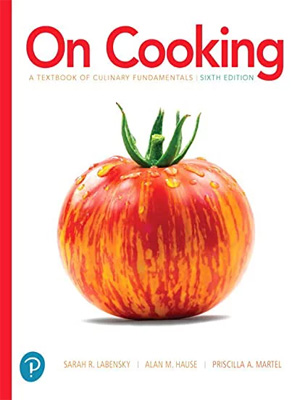
"On Cooking: A Textbook of Culinary Fundamentals (6th Edition)" by Priscilla A. Martel is a comprehensive guide that teaches the "hows" and "whys" of cooking and baking principles. It provides step-by-step instructions, visual guidance, and recipes to clarify techniques.The 6th edition expands its "fundamentals" approach, reflects key trends, and adds information on healthy cooking, sous-vide, curing, and smoking. It also includes dozens of new recipes and more than 200 new photographs.
Here are some key takeaways from the book "On Cooking: A Textbook of Culinary Fundamentals (6th Edition), Without Access Code (What's New in Culinary & Hospitality) 6th Edition".1. Culinary Fundamentals: The book serves as a comprehensive guide to the fundamental principles and techniques of cooking, making it an invaluable resource for both aspiring and experienced chefs.
2. Technique Mastery: The book serves as a comprehensive guide to the fundamental principles and techniques of cooking, making it an invaluable resource for both aspiring and experienced chefs.
3. Ingredients and Equipment: The book provides insights into various ingredients and equipment used in professional kitchens, helping readers understand their properties and applications.
4. Nutrition and Health: It touches on the connection between culinary practices and nutrition, highlighting the importance of healthy cooking and dietary considerations.
5. Culinary History and Culture: Readers gain an appreciation for the historical and cultural aspects of cooking, exploring the roots of various cuisines and culinary traditions.
6. Recipe Adaptation: The book teaches readers how to adapt and create recipes, encouraging culinary creativity and innovation.
7. Food Safety and Sanitation: It underscores the significance of food safety and sanitation practices in the kitchen, ensuring the health and well-being of both chefs and diners.
8. Menu Planning: The book offers guidance on menu planning and the art of designing well-balanced and appealing menus.
9. Sustainability: It discusses the growing importance of sustainable and responsible culinary practices, addressing issues related to sourcing, waste reduction, and environmental impact.
10. Professional Development: "On Cooking" helps readers develop the skills and knowledge needed for a successful culinary career, whether in the restaurant industry, catering, or any other culinary profession.
These key takeaways from the book emphasize the multifaceted nature of culinary arts, encompassing technique, creativity, culture, and a commitment to excellence. The book equips culinary enthusiasts with a solid foundation to excel in the culinary and hospitality industry.
10. Be Our Guest: Perfecting the Art of Customer Service by the Disney Institute
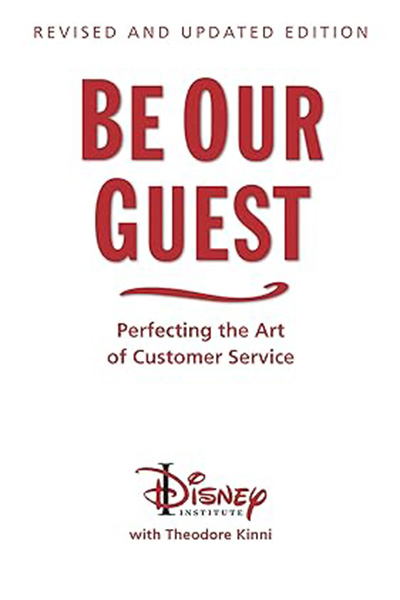
"Be Our Guest: Perfecting the Art of Customer Service" by the Disney Institute is a comprehensive guide that reveals the secrets behind Disney's renowned customer service. Drawing upon decades of experience, this book outlines proven strategies and techniques that can be applied to any organization or industry to create exceptional customer experiences. From understanding customer expectations to cultivating a culture of service excellence, this book provides practical insights and real-life examples to help businesses deliver world-class hospitality. With an emphasis on attention to detail, personalized interactions, and exceeding expectations, "Be Our Guest" equips professionals with the tools needed to elevate their customer service to new heights.
The following are 10 key takeways from the book;
1. Customer service is not just a department, but a culture that permeates every aspect of the organization.
2. The quality of service depends on the quality of standards, delivery, integration and feedback.
3. The key to creating memorable experiences is to exceed customer expectations by paying attention to details and emotions.
4. Employees are the most important asset of any service organization, and they need to be trained, empowered and motivated to deliver excellent service.
5.Service innovation requires constant research, experimentation and adaptation to changing customer needs and preferences.6. Customer loyalty is built on trust, respect, recognition and value.
7. Customer feedback is essential for measuring and improving service performance and satisfaction.
8. Customer recovery is the process of turning dissatisfied customers into satisfied ones by resolving their problems and complaints effectively and efficiently.
9. Customer segmentation is the practice of dividing customers into groups based on their characteristics, behaviors and needs, and tailoring service offerings accordingly.
10. Customer relationship management (CRM) is the use of technology and data to manage customer interactions and enhance customer retention and profitability.
